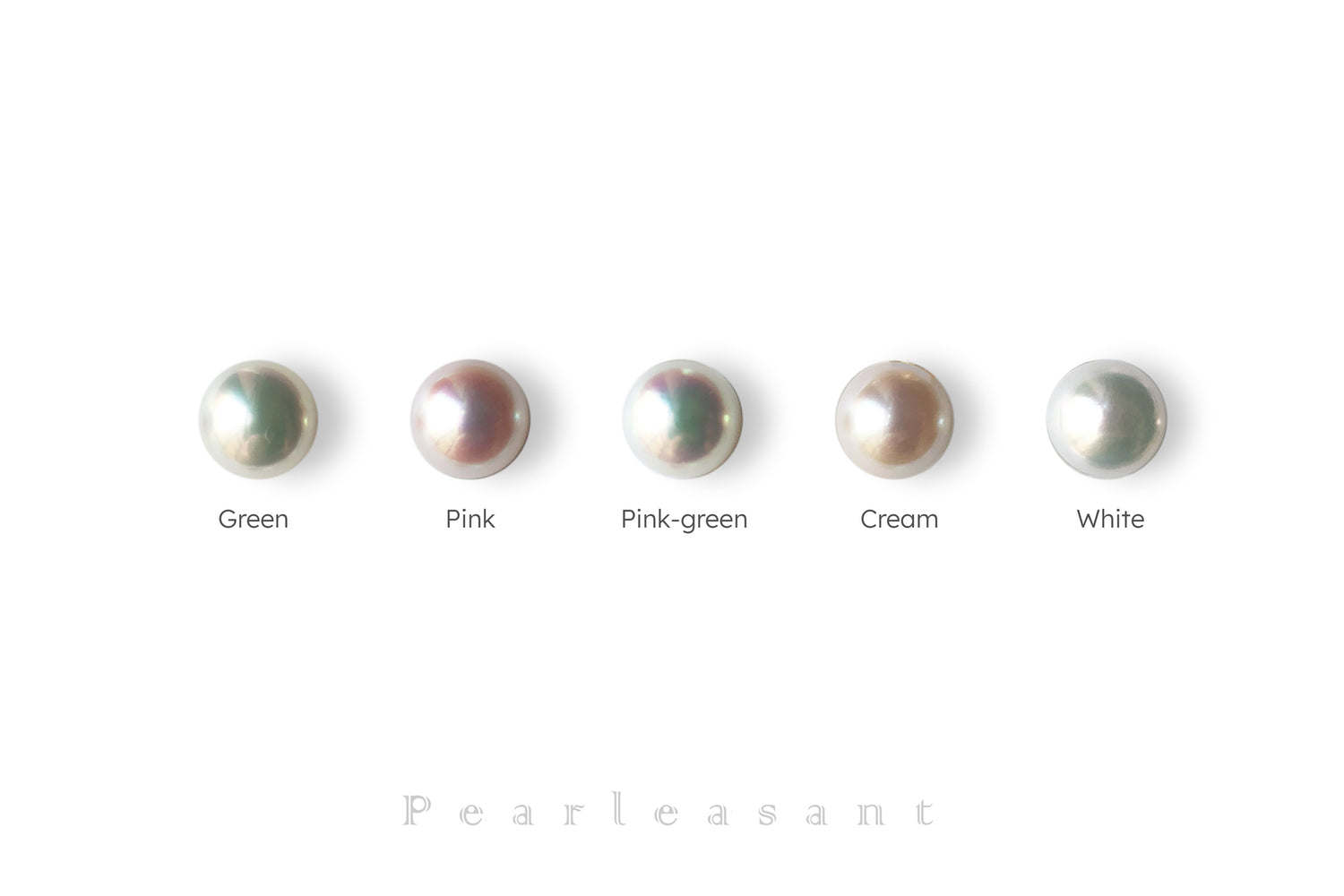Akoya Pearls
Japanese Akoya Pearls
Japanese salt water Akoya pearls are renowned for their beauty, luster, and exquisite quality. These pearls are cultivated from the Pinctada fucata oyster species, commonly known as the Akoya oyster. They have been cultured in Japan for over a century and are highly valued for their round shape, exceptional luster, and delicate colors.

Cultivation
The process of cultivating Akoya pearls involves carefully implanting a small mother-of-pearl nucleus into the oyster, which triggers the formation of layers of nacre, the substance that gives pearls their iridescent beauty. The oysters are then returned to the ocean, where they spend several years developing the pearls.

Body Color
According to the grading report from Pearl Science Laboratory, Akoya pearls typically have three main color systems: ホワイト系 (White), ブル一系 (Blue) and ゴールド系 (Gold), although they can also feature a variety of overtones, like pink, green, cream, silver, etc. We listed some typical overtone and color variant examples under each color system in the left image for your reference.

Overtone
White Akoya pearls typically exhibit an overtones of pink, green, pink-green or cream. The most common overtone is a pink, which adds a subtle hint of color to the white base. However, some pearls may display no overtone. The presence and intensity of overtones can vary depending on the angle of observation, lighting conditions, and the uniqueness of each individual pearl.

Luster
One of the most distinctive characteristics of Akoya pearls is their strong luster. Their surface reflects light brilliantly, creating a stunning glow that is often described as a mirror-like sheen. This luster is one of the key factors that sets Akoya pearls apart from other types of pearls.

Sizing
Japanese Akoya pearls come in a variety of sizes, ranging from 2mm to 10mm. Anything between 6.0mm and 8.0mm is considered to be a standard size, whereas pearls smaller than that are said to be on the small side. Akoya pearls larger than 8.0 mm are thought to be larger than typical; these pearls are more rare and expensive.

White vs Natural White
Natural white (无调色)Akoya pearls are untreated pearls that are individually picked from freshly harvested pearls, while white (调色)Akoya pearls undergo a natural enhancement process where they are tinted with pink or rose hues to extract their latent beauty. Compared to regular white Akoya pearls, natural white Akoya pearls are rarer and command higher prices in the market.
In our store, with regard to pearl body color, Akoya pearls described as "white" have been tinted, while those described as "blue" have undergone color enhancement, unless specifically labeled with the term "natural."

Creation
Japanese Akoya pearls have a long-standing reputation for their exceptional quality and are considered a symbol of elegance and sophistication. They are widely used in the creation of fine jewelry, including necklaces, earrings, bracelets, and rings. The demand for these pearls remains strong both in Japan and worldwide, and they continue to be highly sought after by pearl enthusiasts and collectors.
Overall, Japanese Akoya pearls are treasured for their timeless beauty, craftsmanship, and the meticulous attention to detail that goes into their cultivation.
